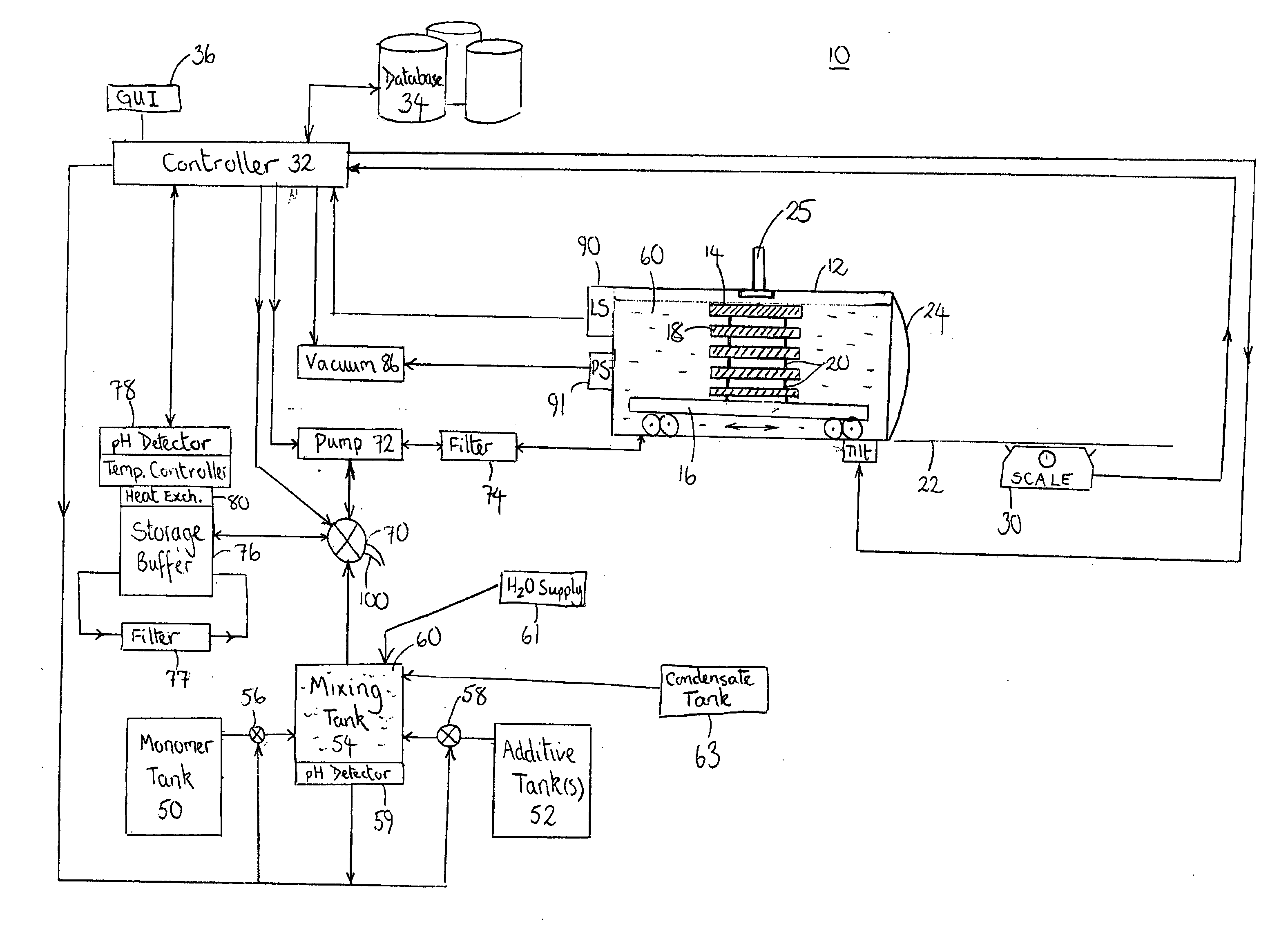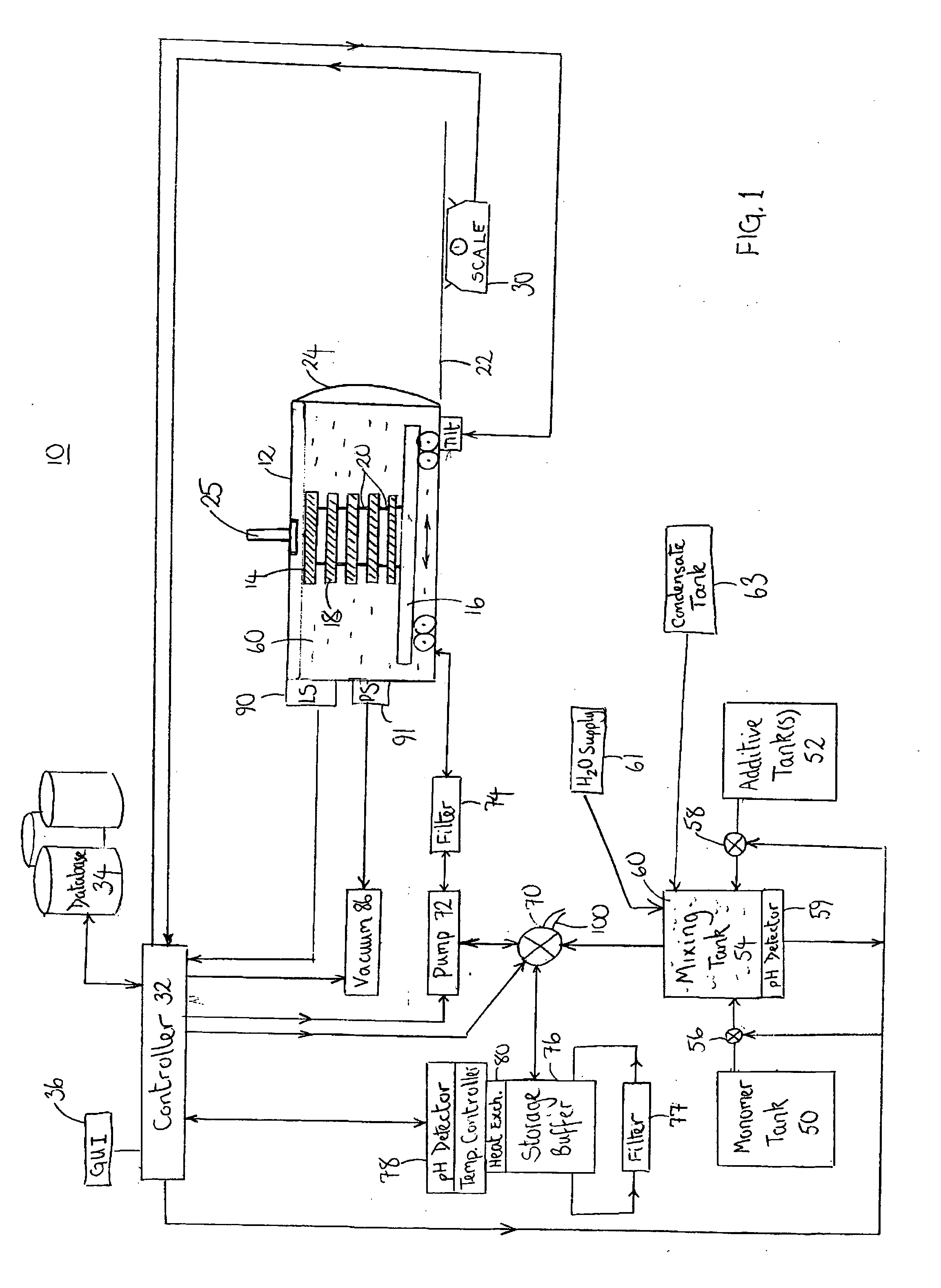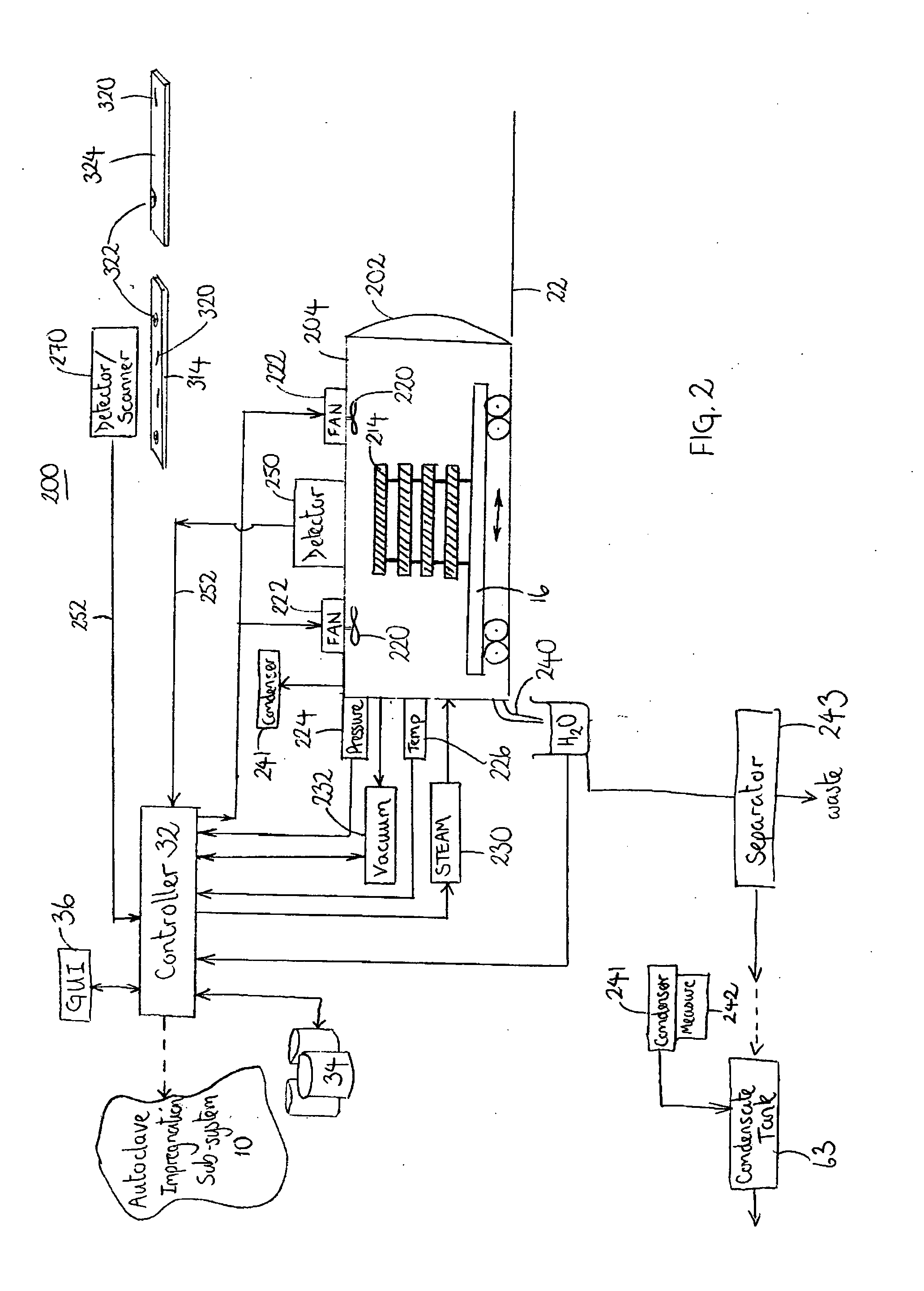Apparatus and Operating Systems for Manufacturing Impregnated Wood
- Summary
- Abstract
- Description
- Claims
- Application Information
AI Technical Summary
Benefits of technology
Problems solved by technology
Method used
Image
Examples
Embodiment Construction
[0049]FIG. 1 shows a block diagram of a preferred configuration of an impregnation sub-system (10) used in the production of modified wood in accordance with one aspect of the present invention.
[0050]The impregnation sub-system (10) includes an autoclave (12) defining a sealable vessel in which a full-cell impregnation process is executed. Untreated wood or a quantity of wooden articles (of varying thicknesses and profiles) (14) is initially loaded onto a sled or pallet (16), the untreated wood (14) being generally arranged in layers (18) that are separated by supporting spacer elements (20). To facilitate the loading of untreated batches of wood into the autoclave (12), the sled (16) preferably includes runners or wheels (22) that engage into a track (not shown) or floor that extends along the base of the autoclave (12). To facilitate movement into and out of the autoclave (12), additional tracks (22) may also exist externally to the autoclave (12), which external tracks (22) align...
PUM
 Login to View More
Login to View More Abstract
Description
Claims
Application Information
 Login to View More
Login to View More - R&D
- Intellectual Property
- Life Sciences
- Materials
- Tech Scout
- Unparalleled Data Quality
- Higher Quality Content
- 60% Fewer Hallucinations
Browse by: Latest US Patents, China's latest patents, Technical Efficacy Thesaurus, Application Domain, Technology Topic, Popular Technical Reports.
© 2025 PatSnap. All rights reserved.Legal|Privacy policy|Modern Slavery Act Transparency Statement|Sitemap|About US| Contact US: help@patsnap.com



